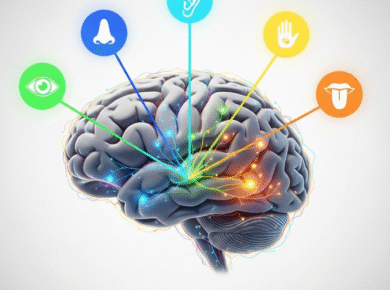Some inventions stand the test of time. Created centuries or even millennia ago, they remain deeply integrated into our daily lives. While much credit goes to the modern world, India’s ancient innovations continue to shape humanity in powerful ways.
This blog explores 20 such innovations—how they’re still used, where, and whether any replacements exist.
1. The Wheel (Circa 3500 BCE)
Still Matters:
The foundation of all transportation systems—bikes, cars, buses, trains, machines, and more.
Used In:
Transport, mechanical systems, logistics, and automation.
Alternatives:
Magnetic levitation in trains is a partial alternative, but wheels remain indispensable globally.
2. ✍️ Writing Systems (Indus Script, ~2600 BCE)
Still Matters:
The cornerstone of communication, education, law, and documentation.
Used In:
Books, legal contracts, websites, signboards, social media, academic papers.
Alternatives:
Voice interfaces and AI, but none have replaced the universality of writing.
3. Yoga (Over 5000 Years Ago, India)
Still Matters:
Practiced for physical flexibility, mental health, stress relief, and spiritual well-being.
Used In:
Gyms, schools, corporate wellness programs, therapy centers worldwide.
Alternatives:
Meditation apps, Pilates, or workouts, but yoga offers a holistic blend unmatched in scope.
4. Ayurveda (Over 3000 Years Ago, India)
Still Matters:
Used for herbal treatments, chronic illness management, and natural healing.
Used In:
Wellness resorts, alternative clinics, herbal cosmetic products, and home remedies.
Alternatives:
Allopathy and Homeopathy are modern alternatives, but Ayurveda is still trusted for long-term wellness.
5. 0️⃣ Zero (Invented by Brahmagupta, 7th Century CE)
Still Matters:
Integral to math, computing, digital technology, and binary systems.
Used In:
Everything from calculators to computer code, finance, physics, and AI.
Alternatives:
No alternative. Zero is mathematically irreplaceable.
6. Decimal System (Ancient India)
Still Matters:
Used universally in measurement, accounting, computing, and science.
Used In:
Currency, data science, school math, and e-commerce pricing.
Alternatives:
Binary (in computers) and hexadecimal, but decimal is the global standard for human use.
7. Flush Toilets (Indus Valley Civilization, ~2500 BCE)
Still Matters:
Modern sanitation depends on this invention.
Used In:
Homes, offices, public restrooms, airplanes, trains.
Alternatives:
Dry compost toilets or bio-toilets in some eco-setups, but flush toilets dominate urban infrastructure.
8. ♟️ Chess (Chaturanga, 6th Century CE, India)
Still Matters:
Played by over 600 million people globally; enhances memory and strategic thinking.
Used In:
Education, competitions (e.g., World Chess Championship), and even AI development (e.g., Deep Blue, AlphaZero).
Alternatives:
Games like Go or strategy video games, but chess remains the most iconic mental game.
9. ⚕️ Surgery & Surgical Tools (Sushruta, ~600 BCE)
Still Matters:
Basic techniques of incision, stitching, and cataract surgery were pioneered by Sushruta.
Used In:
Modern surgery—plastic surgery, orthopedics, eye surgery.
Alternatives:
Robotic surgery and laser tools are enhancements, not replacements.
10. Steel Production (Wootz Steel, ~300 BCE)
Still Matters:
Known for strength and sharpness, it laid the foundation for modern metallurgy.
Used In:
Knives, tools, buildings, aircraft, vehicles.
Alternatives:
Stainless steel, titanium, and carbon fiber are alternatives but derived from foundational metallurgy principles.
11. University System (Nalanda, ~5th Century CE)
Still Matters:
Residential and scholarly model used globally in today’s universities.
Used In:
Higher education institutions, research campuses, and think tanks.
Alternatives:
Online learning platforms offer digital access, but the physical university model still dominates.
12. Buttons (Mohenjo-Daro, ~2000 BCE)
Still Matters:
Essential for fashion and utility in modern clothing.
Used In:
Shirts, coats, jeans, bags, uniforms.
Alternatives:
Zippers and Velcro, but buttons remain classic and widespread.
13. ⛲ Stepwells (Baolis, ~600 CE, India)
Still Matters:
Ingenious ancient solution for water conservation, especially in dry climates.
Used In:
Traditional and eco-tourism models in Rajasthan and Gujarat, now influencing modern rainwater harvesting systems.
Alternatives:
Modern water tanks and dams—but stepwells remain sustainable and beautiful.
14. Board Games (Pachisi, ~4th Century CE)
Still Matters:
Foundation for games like Ludo, and principles used in game theory.
Used In:
Entertainment, education, cognitive therapy.
Alternatives:
Digital games and apps, but physical board games remain popular for social interaction.
15. Herbal Cosmetics & Skincare (Vedas, ~1500 BCE)
Still Matters:
Use of turmeric, sandalwood, neem, and aloe vera in skincare routines.
Used In:
Herbal soaps, face packs, organic makeup lines, Ayurvedic spas.
Alternatives:
Synthetic cosmetic products, though the trend is shifting back to herbal.
16. Astronomy & Planetary Science (Aryabhata, ~500 CE)
Still Matters:
Calculated planetary motion and explained eclipses before telescopes.
Used In:
Modern astronomy, ISRO and NASA projects, calendars, and astrological systems.
Alternatives:
None. These discoveries are foundational and still used.
17. ️ Bamboo Architecture (Ancient India & Southeast Asia)
Still Matters:
Used in eco-friendly construction and temporary structures.
Used In:
Resorts, pavilions, rural homes, and flood-resistant structures.
Alternatives:
Concrete and steel are stronger but not as sustainable or biodegradable.
18. Cotton Spinning & Weaving (~3000 BCE)
Still Matters:
India was a pioneer in growing and processing cotton.
Used In:
Clothing, bedding, medical bandages, and packaging.
Alternatives:
Synthetic fibers (polyester, nylon) exist, but cotton is still favored for comfort and eco-friendliness.
19. ️ Ink (Masī, ~4th Century CE)
Still Matters:
Used in writing, art, calligraphy, and printing.
Used In:
Books, newspapers, official documents, pens, stamps.
Alternatives:
Digital text and styluses are gaining ground, but ink still dominates print and school supplies.
20. Languages & Grammar Systems (Panini, ~500 BCE)
Still Matters:
Panini’s Sanskrit grammar is considered the first structured language system.
Used In:
AI models, natural language processing, machine translation, and linguistic research.
Alternatives:
None. His system remains a reference for structured language studies.
Final Thoughts
Whether it’s zero from India or the wheel from Mesopotamia, these inventions transcend time. They reflect not just genius but utility and universal relevance. Their core principles continue to shape the way we live, work, communicate, and heal—even thousands of years later.
Sources & References
The Wheel
-
Smithsonian Magazine: A Revolution on Wheels
✍️ Writing Systems & Zero
-
BBC: The Story of Zero
-
Ancient.eu (World History Encyclopedia): Writing in the Ancient World
Yoga
-
Harvard Medical School: Yoga for Better Mental Health
Ayurveda
♟️ Chess (Chaturanga)
-
Britannica: History of Chess
Decimal System & Mathematics
-
Encyclopaedia Britannica: Indian Mathematics
Nalanda University
-
UNESCO World Heritage: Nalanda Mahavihara
Indus Valley Toilets
-
LiveScience: Sanitation in Ancient Mohenjo-Daro
⚕️ Sushruta & Surgery
-
National Library of Medicine: Sushruta – The Pioneer of Surgery
Panini & Sanskrit Grammar
-
Stanford University: Panini’s Grammar & Language Theory
Aryabhata’s Astronomy
-
NASA History Division: Indian Contributions to Astronomy
️ Bamboo Architecture
Cotton Spinning in India
-
BBC Bitesize: Textiles in Ancient India






